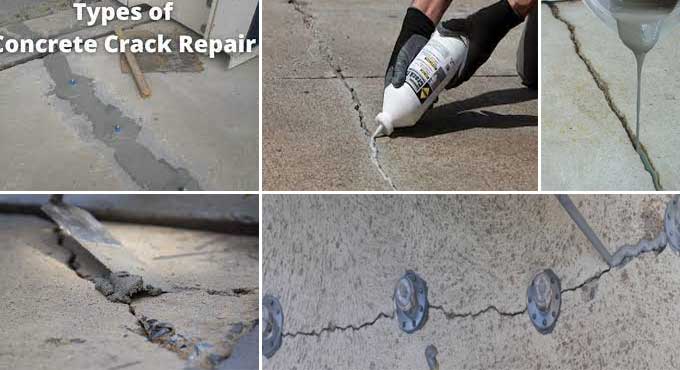
Reasons for Concrete Cracks and how to prevent them
Concrete slabs usually exhibit hair cracks after 5 to 6 hours or the next day after being cast. It is not advisable to build or construct a structure or building with concrete cracks.
Water and oxygen can pass through cracks in the steel reinforcement, which will lead to corrosion as moisture and oxygen react with the steel reinforcement.
Corrosion may cause steel to expand by 2 to 6.5 times its original volume, endangering the structure and even causing it to collapse. So, the major goal of this essay is to examine potential causes of concrete cracking as well as preventative measures.
Possible reasons for Concrete Cracks
Here are the possible reasons for Concrete Cracks:-
Influence in Temperature
Temperature in the environment
It is the most important and significant cause of concrete fractures. During concreting, the ambient temperature is very important.
The concrete's water content will evaporate at very high temperatures, causing the concrete's plastic to shrink. On the surface of the concrete, cracks will appear as a result of plastic shrinking.
Temperature in the concrete
Ideally, concrete should have a temperature range of 26.7?C to 35?C. So, it is recommended to add ice to the water if the temperature exceeds 35?C.
Water to Cement ratio
That is yet another significant factor in concrete fractures. According to the design mix of concrete grade, the water-cement ratio should be used. More water exposure will cause concrete to begin bleeding, which will result in surface fractures.
As tight concrete makes it harder for the laborers to work, they typically advise adding more water during the concrete casting process.
But that excess water could cause further cracks in the concrete and thus ruin the life span of the structure.
Concrete Vibration frequency
This reason is yet another significant factor in concrete fractures. Concrete cracks might be caused by excessive vibration.
The coarse aggregate at the bottom and the fine aggregate at the top are settled by intense vibration. The major cause of concrete fractures is an excessive amount of fine aggregate at the top, which is unacceptable.
Sand contains silt
Silt in the sand used to make concrete can cause fractures to appear in the finished product. Sand used in concrete won't form the right bond with cement if it contains excessive amounts of silt. Concrete fractures appear as a result of this shoddy bonding.
Reinforcement temperature
Concrete cracks may form if steel reinforcing experiences thermal expansion due to a high temperature.
And if there is shuttering oil on the steel reinforcement's surface, the connection between the steel and concrete will not be as strong as it should be, which might lead to fractures appearing in the concrete.
Types of cement used
The type of cement to use should be determined by the work. Concrete fractures may result from improper cement choice. For instance, concrete fractures will appear if Fast Hardening Cement is used for slab casting.
Centering is incorrect
In the case of slab casting, if the centering and shuttering is not assembled correctly, the concrete may settle during the concrete placement, resulting in cracks developing in the concrete structure.
Shuttering material overheating
As the shuttering material heats up, cracks may also appear in concrete, especially if the shuttering material is steel, but this is a minor issue.
Preventive measures
Here are some of the preventive measures to concrete cracks:-
- Don't pour concrete outside while it's hot. Try to begin pouring concrete in the morning or evening when it is cooler if the daily temperature is over 35 C.
- Follow the normal specification of the design mix of concrete grade; do not overwater concrete.
- Try to limit vibration. The appropriate level of vibration should be used.
- Use caution when utilizing sand that has too much silt, and the sand's silt concentration needs to be between 5% and 6%.
- Steel should be un-lubricated and at a temperature that is typical for it.
- During mass concrete, there shouldn't be a significant change in the slump values of the various batches of concrete.
To get more details, watch the following video tutorial.
Video Source: Fix it Flip


